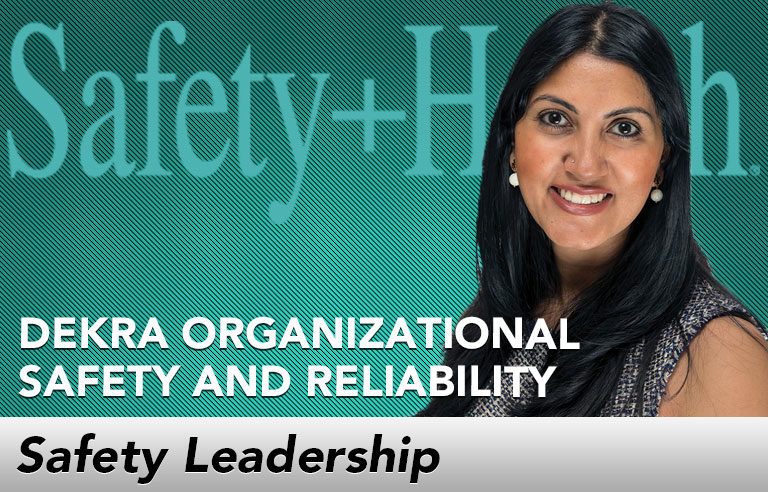Safety Leadership: Situational awareness and human performance

Editor’s Note: Achieving and sustaining an injury-free workplace demands strong leadership. In this monthly column, experts from global consulting firm DEKRA Organizational Safety and Reliability share their point of view on what leaders need to know to guide their organizations to safety excellence.
We’re all familiar with the phrase, “We are creatures of habit.” When saying it, two things are implied. First, we try to maintain predictability and return to the same pattern of behavior. Second, when we’re in our normal workspace and doing routine tasks, we don’t stop and intentionally process information.
Instead, we operate in “fast brain” mode, meaning our brain operates at the subconscious, or non-thinking, level.
From an energy conservation perspective, habits are beneficial. Consider how difficult each day would be if we only engaged the rational part of the brain we often call the “slow brain.” If we did that, routine tasks such as brushing our teeth and dressing for work would go at a glacial pace and tire us out. Using fast brain mode during routine tasks helps us conserve energy. That helps our slow brain take over when we need it the most.
But let’s face it, despite having brains that can operate in slow and fast modes, we have limitations that can adversely impact us at work, at home and on the road. Doing important tasks correctly and at a greater frequency is required in certain situations, such as driving.
Improving situational awareness in our decisions
The term “situational awareness” is often used when people miss something important at work that leads to an injury or operational failure or slowdown.
Think of all the factors that can impact awareness: fatigue, the cognitive loading involved in a particular task, the various distractions all around us, not knowing and, of course, working in fast brain mode. For these reasons, it’s prudent that organizations proactively promote situational awareness, especially for tasks with inherent serious injury or fatality potential.
Simply requesting that employees “remain situationally aware” is not a strategy informed by science and will always be met with skepticism and flawed execution. This is because simply telling people to be situationally aware doesn’t teach them how to see more deeply or recognize a change in the environment.
We need to consider how we can improve situational awareness when it matters most. When unplanned events occur, there almost always are precursors that may seem obvious in hindsight but were fully missed.
Becoming more purposeful
The good news is that some applied human performance interventions can help prevent mistakes from occurring. They include becoming more sensitive to weak signals when something doesn’t feel quite right – whether they involve health, relationships or safety.
A strategy that works well is embedding prompts through critical work tasks that spark a worker to look for hazards and exposures, and to detect change. This will engage the slow brain to help workers think through their actions more thoroughly, overcome “social think” and approach others about safety.
Teaching employees about how attention really works helps create engagement around using human performance tools. When leaders and teams understand the human factors in safety-relevant situations, including meetings, work planning and work execution, everyone becomes more purposeful in their planning and execution.
Designing work environments and processes with the employee’s brain in mind reduces exposure and builds human performance reliability. The same is true when we use brain-aligned tools such as job briefings, standard operating procedures and training. Improving situational awareness is about embracing the brain, building individual and team capabilities, creating an environment in which critical information is available in the right format at the right time, and designing systems that have built-in error forgiveness.
So let’s commit to losing the reference to “lost” situational awareness and ask the question: What are we doing through our leadership, culture, systems and processes to create situational awareness?
This article represents the views of the author and should not be construed as a National Safety Council endorsement.
 Rajni Walia, Ph.D., has more than a decade of experience leading performance management, organizational assessment and development, and providing human error reduction consultations that foster strong performance reliability through a systemic approach of designing and enhancing workplaces and processes, all deeply embedded in applied neuroscience.
Rajni Walia, Ph.D., has more than a decade of experience leading performance management, organizational assessment and development, and providing human error reduction consultations that foster strong performance reliability through a systemic approach of designing and enhancing workplaces and processes, all deeply embedded in applied neuroscience.
Direct to your inbox: Sign up to be notified in email about new "Safety Leadership" columns.
Post a comment to this article
Safety+Health welcomes comments that promote respectful dialogue. Please stay on topic. Comments that contain personal attacks, profanity or abusive language – or those aggressively promoting products or services – will be removed. We reserve the right to determine which comments violate our comment policy. (Anonymous comments are welcome; merely skip the “name” field in the comment box. An email address is required but will not be included with your comment.)

